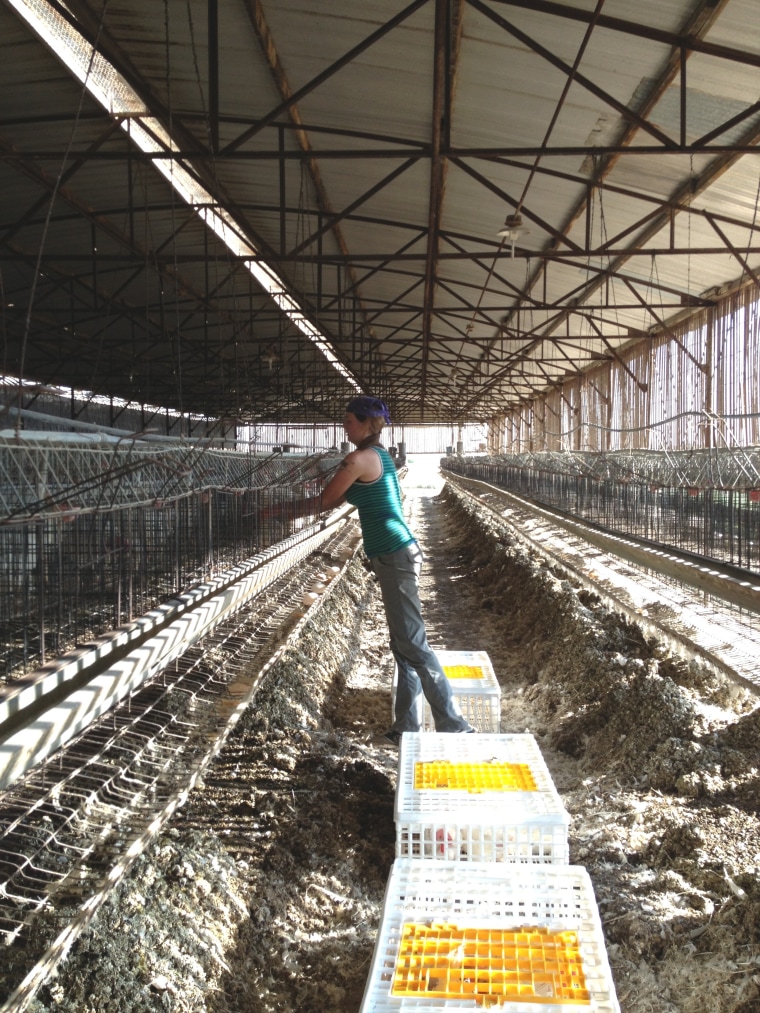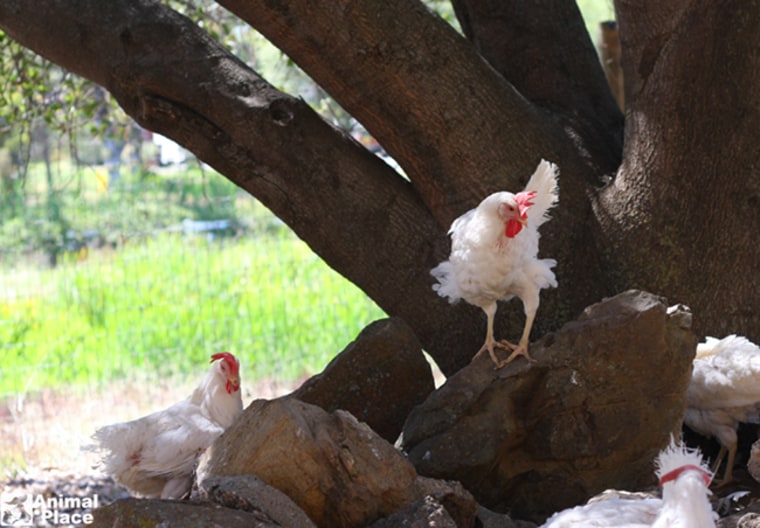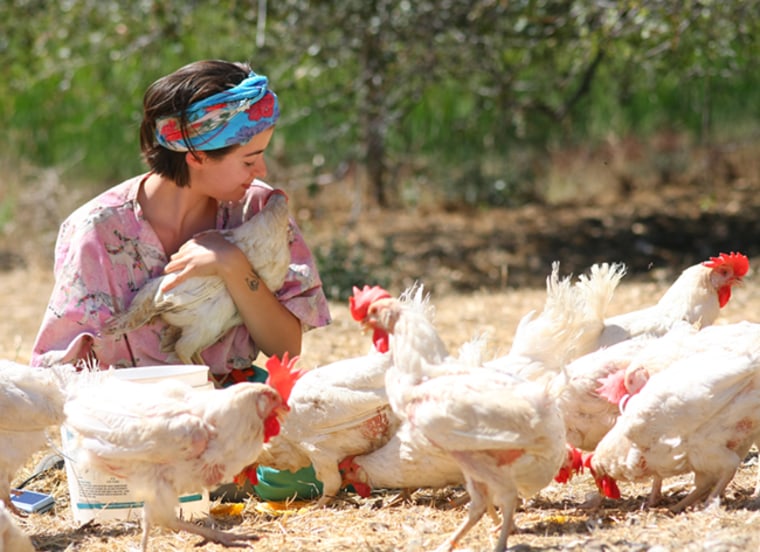Chickens aren't exactly known to be frequent fliers — let alone cross-country travelers. But on Sept. 4, over 1,000 rescued hens will take to the friendly skies.
California-based shelter and sanctuary Animal Place will airlift the group of recently-rehabilitated chickens to new lives on the East Coast, as part of its 3-year-old program to find homes for animals originally destined for slaughter.
The female chickens, who will head to New York, are part of a group of 3,000 rescued at an “egg-laying” farm that contacted Animal Place at the end of July, to avoid having to slaughter the animals.
"When the hens slow down or stop producing eggs, the industry considers them to be 'spent,'" Gary Smith, a spokesperson for Animal Place, told TODAY.com. "They are no longer economically viable in the industries eyes, so they are sent to slaughter for cheap chicken meat or pet food."
Getting the chickens flight-ready was not easy.
“The birds were covered with parasites and we had to do a series of treatments to eliminate them all,” said Animal Place Executive Director Kim Sturla told TODAY.com via email. “Each bird has been health checked which also includes nail trimming since none of the birds received any individual care during the two years living in cages.”

Some hens needed antibiotics — all suffer from osteoporosis due to their crowded cages. One particularly grueling challenge for Animal Place staffers was preventing the hens from “clumping,” or climbing on top of each other in their barn from the stress of such a drastic change in their living situation.
“Each evening a team of eight to 10 people spent one to two hours de-clumping the 3,000 birds,” Sturla said. “It is time consuming, exhausting, and stressful, because there is always the high likelihood some will suffocate and die if you are not diligent.”
While many of the rescued chickens will remain in California, where they will find “forever homes” or remain with Animal Place and other shelters, a thousand or so hens must make a trek to the East Coast sanctuaries that offered to accept them.
But transporting chickens across the country isn't as simple as booking a commercial flight. Animal Place had to find a private carrier willing to take them, and a donor generous enough to front the funds. Sturla says it’s the only airlift of adult chickens that she knows of.
“Commercial airlines will not transport adult hens,” she said. “If we chose to use vehicles and drive across country we would need eight to 10 air-conditioned cargo vans with two drivers per van to drive nonstop.”
The hens will take a red-eye flight since they start bedding down at dusk. Animal Place staff want to preserve their sleep cycle, thereby alleviating some of the stress that will inevitably arise from the flight. Another benefit of a night flight is that chickens don’t eat or drink during the evening.

So what awaits these hens on the other side?
“Freedom,” Sturla said. “Understand, these hens for their first two years of life, lived in a wire cage with 3-feet of feces below them. Their feet never touched the earth — only wire.”
They got a brief taste of what lies ahead during the last month they spent in rehabilitation in California. In just a few weeks, they started exhibiting typical hen behaviors once again.
“They are flapping their wings, jumping up on bales of straw, perching, pecking at the ground,” Sturla said. “A few birds on their first day of going outside actually sunbathed! A beautiful sight.”
